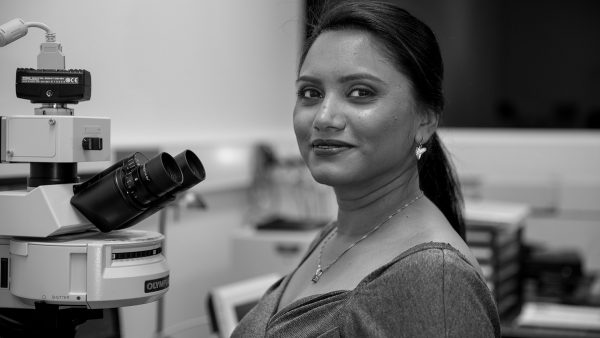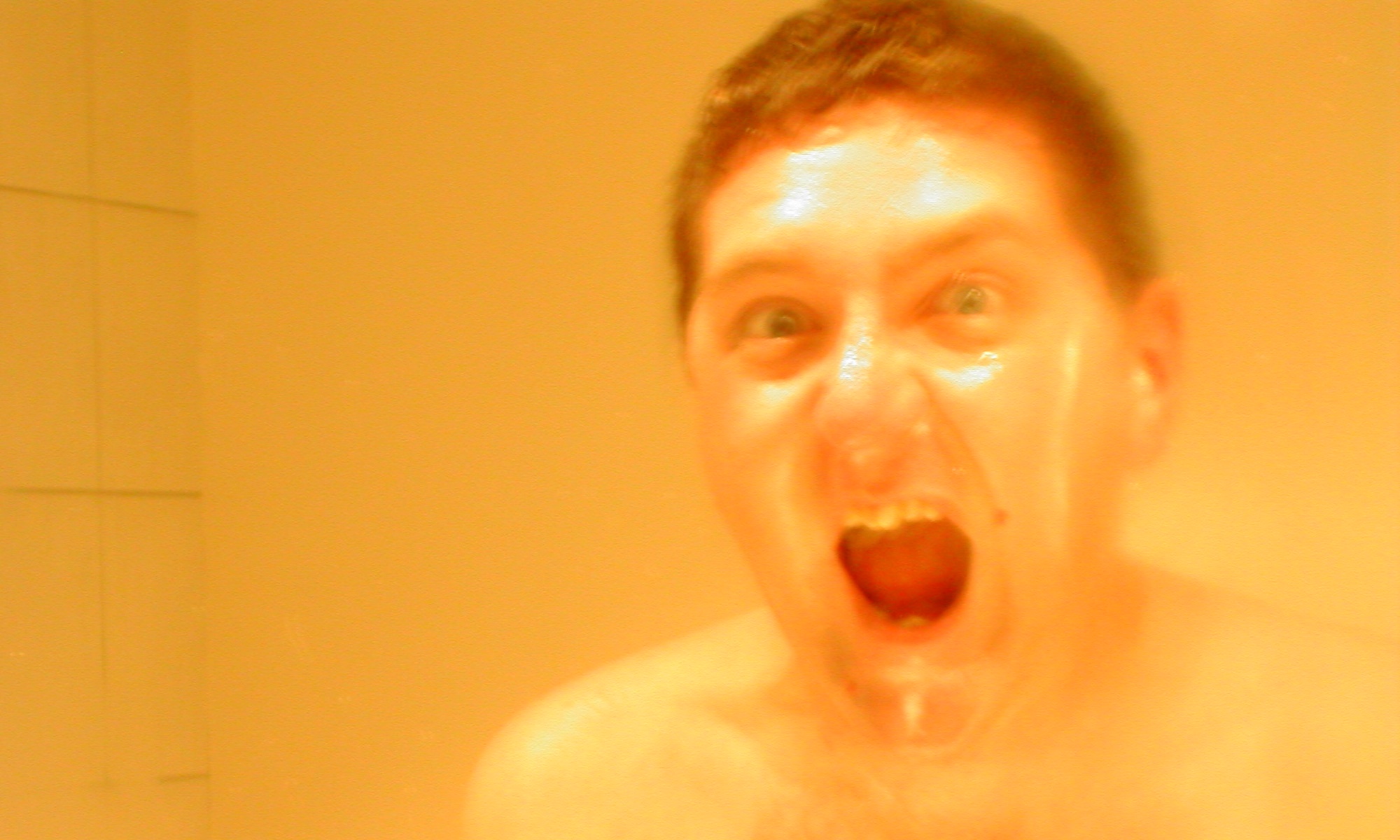
The spring series continues with two brand new species of frog and some reflections on COVID-19 with special guest Upulie Divisekera, science communicator and woman of much intelligence and smarts.
We talk about trees, evolution, the distance to the Sun, the sadness of scientific names, and infectious diseases. And frogs, of course. There’s quite a bit about frogs.
This podcast is available on Amazon Music, Apple Podcasts, Castbox, Deezer, Google Podcasts, iHeartRadio, JioSaavn, Pocket Casts, Podcast Addict, Podchaser, SoundCloud, Spotify, and Speaker.
You can also listen to the podcast below, or subscribe to the generic podcast feed.
Podcast: Play in new window | Download (Duration: 49:45 — 45.6MB)
Upulie has been on the podcast several times before. You might like to listen.
Episode Links
-
Upulie Pabasarie Divisekera is an Australian molecular biologist and science communicator, and is the co-founder of Real Scientists, an outreach program that uses performance and writing to communicate science.
-
Molecular biologist at the intersection of art, science, poetry, tech | |Co-founder, @RealScientists | writetoupulie@gmail.com| #BlackLivesMatter
-
FrogID Week, hosted by the Australian Museum, is Australia's biggest frog count. Held annually, it's when anyone with a smartphone can help record frog calls through the free FrogID app as a measurement of frog health and distribution around the country. It aims to monitor frog distributions and populations over time, helping us to understand how frogs and their ecosystems are responding to a changing planet.
-
A bioindicator is any species (an indicator species) or group of species whose function, population, or status can reveal the qualitative status of the environment.
-
[4 October 2023] Citizen scientists across Australia have helped uncover a frog species new to science in Western Australia, the Northern Territory and western Queensland. Find out more about this funny Aussie frog, which has a longer ‘laugh’ than the original tree frog species.
-
[9 October 2023] Hidden in plain sight in the forests of Victoria’s Otway Plains and Ranges, we describe a new smooth frog to science, with an unusual reproductive mode.
-
Eastern Smooth Froglet. A small species of frog reaching up to 3.5 cm in body length.
-
Southern Smooth Froglet. A small species of frog reaching up to 3.5 cm in body length.
-
[3 November 2023] In an interesting twist, the scientific name has no gender attached to it as the owl was referred to as a female in the book series and portrayed by a male owl in the movies.
-
[23 October 2023] A TV writer claims that research shows that Tetris is “literally a trauma first aid kit.” Her tweets sound scientific, but the research behind it is unconvincing.
-
[27 October 2023] When people start mistaking shitposting on social media for political advocacy, I think we need to bring out the smelling salts then.
-
[27 October 2023] ‘All posting on social media is shitposting until proven otherwise’ 2023 Snarky Platypus proverb
-
Xylem is one of the two types of transport tissue in vascular plants, the other being phloem. The basic function of the xylem is to transport water from roots to stems and leaves, but it also transports nutrients.
-
Photosynthesis (/?fo?t??s?n??s?s/ FOH-t?-SINTH-?-sis) is a biological process used by many cellular organisms to convert light energy into chemical energy, which is stored in organic compounds that can later be metabolized through cellular respiration to fuel the organism's activities.
-
The occipital lobe is one of the four major lobes of the cerebral cortex in the brain of mammals. The name derives from its position at the back of the head, from the Latin ob, 'behind', and caput, 'head'. The occipital lobe is the visual processing center of the mammalian brain containing most of the anatomical region of the visual cortex.
-
The human eye is a sensory organ, part of the sensory nervous system, that reacts to visible light and allows humans to use visual information for various purposes including seeing things, keeping balance, and maintaining circadian rhythm.
-
[1 November 2023] Across the state, masks will be required in hospitals and skilled nursing facilities.. This in an effort to limit the spread of RSV, the flu and covid. So everyone walking into this hospital later today will have to wear a mask.
-
[2 November 2023] With a recent rise in COVID-19 cases in Los Angeles County, mandatory masking is returning in certain locations.
-
19. Hospital pressure as 'exponential increase' of COVID hits Ballarat | The Courier | Ballarat, VIC[4 November 2023] COVID is again on the rise across Ballarat as an "exponential increase" in the number of cases indicates the eighth wave of the virus sweeping across Australia has reached the city.
-
Estimates of deaths range from 17 million to 50 million, and possibly as high as 100 million, making it one of the deadliest pandemics in history.
-
Severe acute respiratory syndrome coronavirus 1 (SARS-CoV-1), previously known as severe acute respiratory syndrome coronavirus (SARS-CoV), is a strain of coronavirus that causes severe acute respiratory syndrome (SARS), the respiratory illness responsible for the 2002–2004 SARS outbreak.
-
[1 November 2023] Boris Johnson agreed with some Tory MPs who thought Covid was "nature's way of dealing with old people", the inquiry into the pandemic has been told.
-
The Good Liars came together when they posed as investment bankers protesting the Occupy Wall Street movement. Together, they formed the 1%’s counter protest: Occupy Occupy Wall Street. What started as one video quickly turned into an actual movement—giving an outrageously blunt and honest voice to the silent 1%.
-
[2 November 2023] Had a conversation about the sun at a Flat Earth Convention and it almost broke us.
If all the links aren’t showing up, try here.
Thank you, Media Freedom Citizenry
The 9pm Edict is supported by the generosity of its listeners. Please support The 9pm Summer Series 2023 before 30 November to fund more special guest episodes across the season.
If you miss that deadline, you can always subscribe for special benefits or throw a few coins into the tip jar.
This episode it’s thanks to Matthew Crawford for his contribution. Please consider joining him by pledging your support.
Series Credits
- The 9pm Edict theme by mansardian via The Freesound Project.
- Edict fanfare by neonaeon, via The Freesound Project.
- Elephant Stamp theme by Joshua Mehlman.
